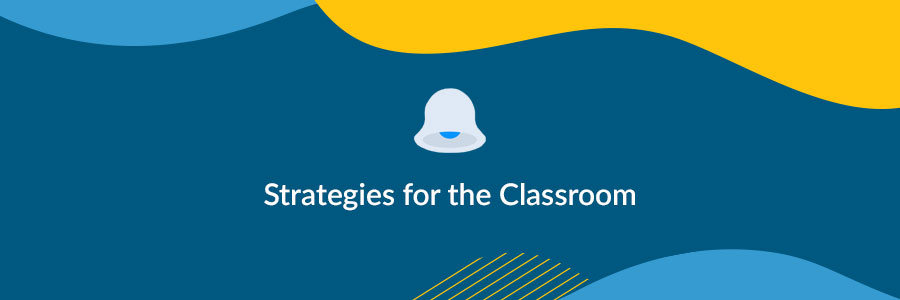Written by Marie Apaloo
What Is Active Reading?
Active reading is the process of engaging with a text; essentially, active reading requires going beyond the gist of a written work and applying critical thinking and learning strategies. It involves processing or reviewing information in a meaningful, purposeful way.
Why Is Active Reading Important for Academics?
Key components of a scholar’s work include understanding, presenting, and evaluating academic texts and using them to inform future research. With these goals in mind, approaches like skimming (or even reading and rereading) a text are likely to fall short, and implementing active reading strategies becomes a key to learner success.
Students often think that the best way to study is to memorize information. However, this faulty concept is built on an outdated model of education whereby students expect teachers, textbooks, and other authorities to simply "inject" information into them (for more on that, check out Freire’s Banking Model of Education). True learning, particularly at a university level, necessitates understanding, applying, and evaluating information so it can be built on. Without actively engaging with a text, it is extremely difficult to achieve these goals.

How to Read Actively: 4 Helpful Strategies
There are many techniques that you can apply to make your reading more active. In this section, I will outline four active reading strategies to help you get started.
1. Annotate
Annotating is the process of interacting with a reading. This could include writing comments, drawing, creating diagrams, or enhancing text.
Through your annotations, you can ask questions, summarize key points, disagree with an argument, and essentially enter into a dialogue with the author. This allows you to engage with the text in a freeform manner, activating your prior knowledge and focusing on your academic interests and goals.
Bear in mind here that annotating is not highlighting, which can easily turn into a passive approach.
2. Ask yourself, "What is the take-home message?"
Ultimately, will you remember every detail of every paper that you read? No. What’s more important is to remember the key messages of the articles so you can establish your foundational knowledge and mentally file the relevant author, paper, or resource to revisit it later down the line, as needed.
After reading an article, if you can’t recall the take-home message, it's likely that you haven’t entirely understood it or that you read in a way that prevented you from seeing the forest for the trees. If that is the case, review the text again, looking for the key points (e.g., the thesis statement, results, and conclusions) that make up the main contribution of the study.
3. Read selectively
Following the above tip, you should be selective in your reading. Begin by previewing the text and identifying key sections that pertain to your goals.
For example, how do you want to use what you're reading? Do you want to include it in your literature review? Use it to identify research gaps? Check the key findings to see if they are consistent with other sources. Check the methodology to assess its limitations. These goals would all entail a different focus for how you read the paper.
The key point here is that, in most cases, you don't need to read every word. Making an informed decision about which parts you'll read and how deeply you'll engage with those selected parts can ensure that your time and energy are applied where they count.
4. Team up in a study group
As the saying goes, you never truly learn something until you teach it.
Group reading is a great strategy to both improve your engagement with a text and lessen your overall workload. Split your weekly readings with a classmate, assigning an appropriate number of texts to each partner. After reading the articles, reconvene and explain what you read to your classmate, being prepared to answer any questions that they might have. The experience of absorbing the information in a paper, processing it, and then presenting it in your own words is extremely helpful in cementing the newly acquired knowledge and information in your brain.
These are a few of many possible strategies, activities, and techniques that you can use to support active reading. Try them to see what works for you; from there, you can be creative in developing your own active reading approach tailored to your needs.

Active Reading Strategies for Teachers, Instructors, and Lecturers
From an instructor's perspective, you may find yourself frustrated by your students' showing up to class and demonstrating during discussions that they have not engaged with or understood their assigned readings.
Before assuming that your students have not even bothered to open their books, consider that they may not yet know how to read actively.
You'll give your students the best chance for success if you provide them with tools and activities that encourage active reading. Below are two ways that you can do this.
1. Mini quizzes
There is a concept in educational psychology called "the testing effect," which tells us that testing enhances learning by improving the later retention of study materials. Brief, time-constrained, weekly quizzes are a good way to take advantage of this effect.
The briefness of the quiz means that students will be forced to read in a focused and targeted way, identifying and giving attention to what they predict will be important enough to be included in the test.
Of course, for this to be effective you need to ask the kinds of questions that can't easily be found in the documents with an electronic search. Asking the right types of questions (i.e., ones that require some critical thinking as opposed to straightforward dates, definitions, or facts) in combination with the time restrictions forces learners to read the texts beforehand and consolidate the information they have read.
2. Group discussions
This strategy is very similar to the study group suggestion in the previous section.
To put this into practice as a teacher, put your students into groups. Within each group, have one student be responsible for each reading. So if you assign three readings, each group should have three students in it. Then, have students present the key points (for example, for a scientific paper this would include the aims, methodology, results and conclusions, implications, and limitations) of their assigned paper to their group members.
This is a highly effective activity. The group dynamic requires each student to be accountable for their assigned text, preventing them from "checking out" of the activity. Simultaneously, the overall workload for each student is lightened, meaning that they can focus their time and energy on actively reading a specific text and sharing it with their group. Finally, through collaboration with their classmates, students gain exposure to a wider array of readings, which they can return to later according to their interests or academic goals.
Overall, this strategy encourages student-centered (rather than teacher-centered) learning, giving students a sense of efficacy, an opportunity to engage with their peers, and a strategy to improve their active reading skills.
Conclusion
Active reading is a critical academic skill that supports student success and true learning.
Using the strategies above, you can enhance your own or your students' engagement with academic texts, increasing the value and meaning of the educational experience.
Image source: DragonImages/Unsplash.com
Make Every Word Count with Professional Proofreading
Try Our Academic Proofreading Service, or Get a Free Sample
About the Author












